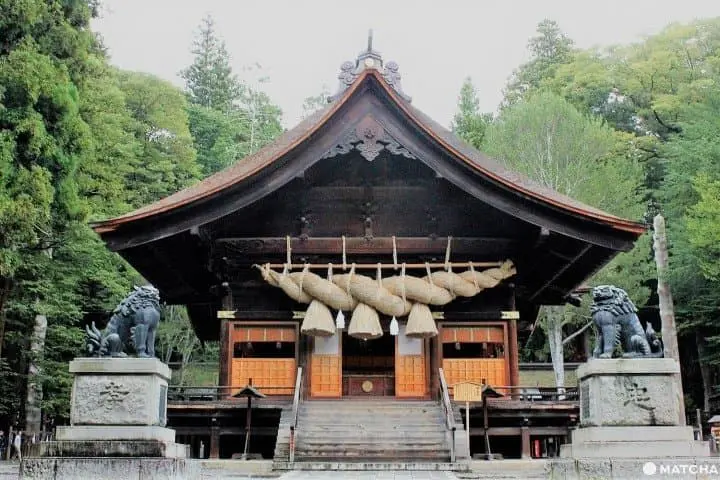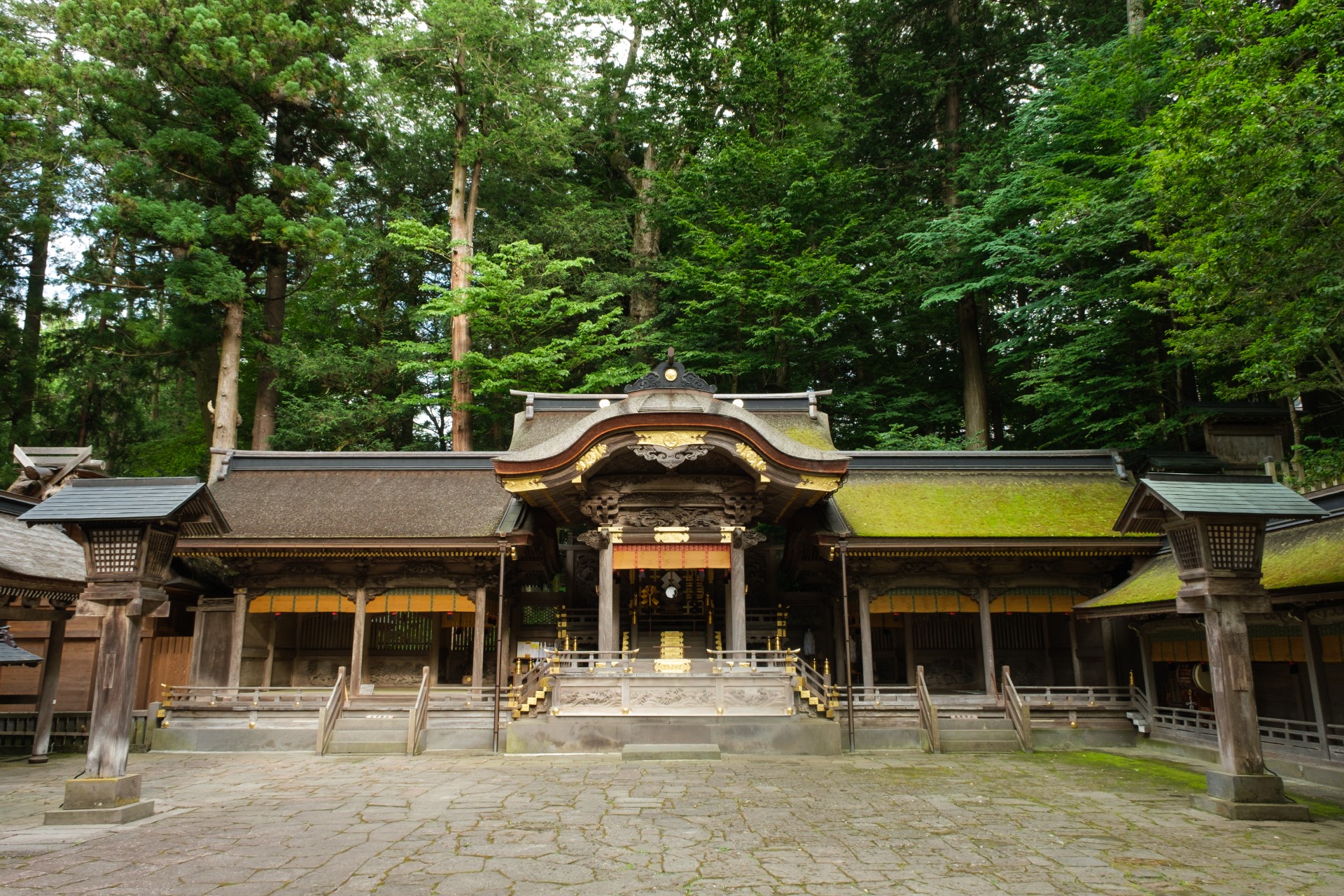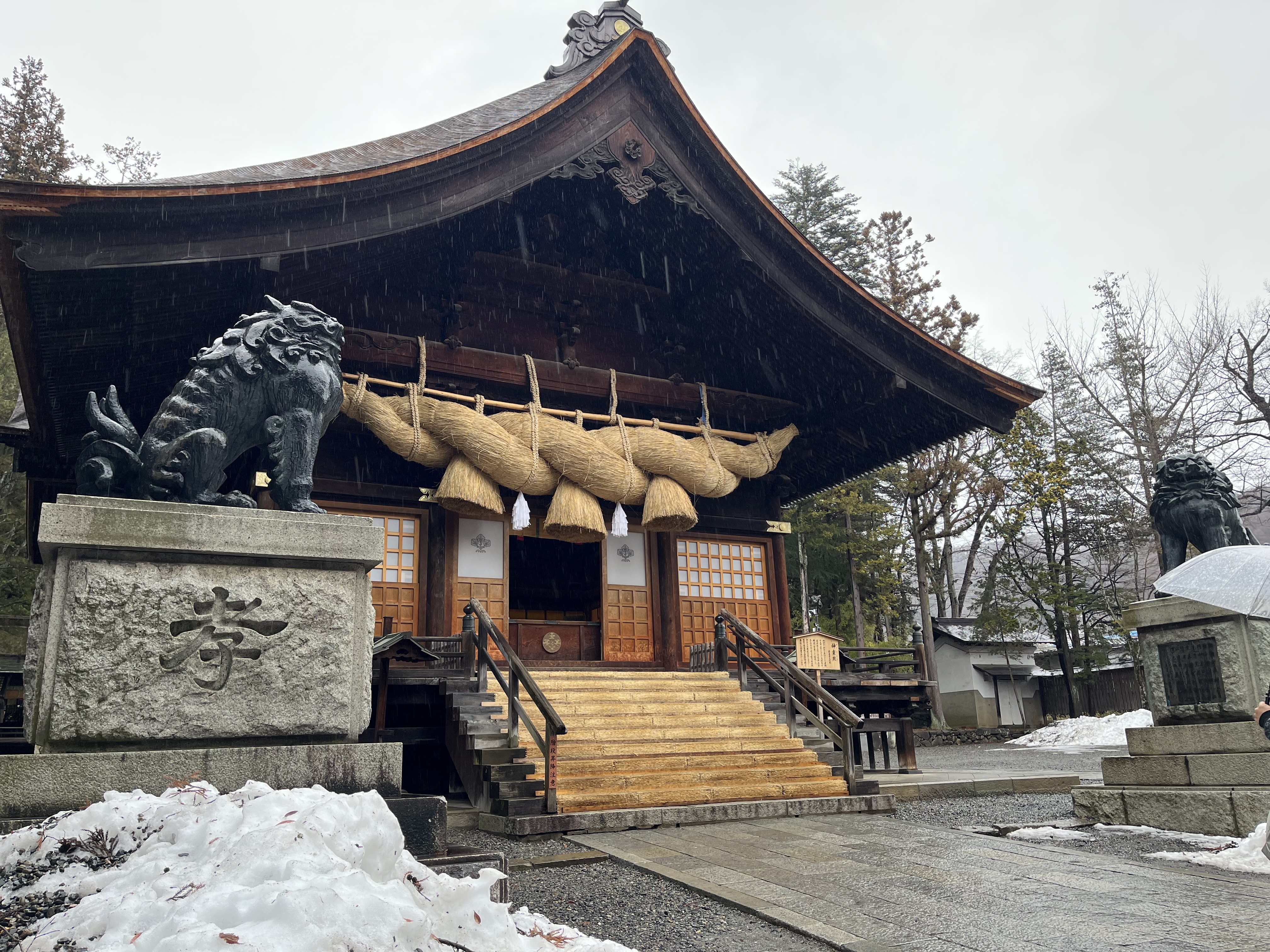


Suwa Taisha
The ancient powerhouse of valor and hunt, famous for its thrilling Onbashira festival.
One of Japan's oldest shrine complexes, Suwa Taisha in Nagano is dedicated to a powerful native god and is known for its dangerous and spectacular log-riding festival held every six years.
History of the Shrine
Suwa Taisha is one of the oldest shrines in Japan, with origins so ancient they predate the 'Kojiki' and 'Nihon Shoki'. It is the head shrine of the over 10,000 Suwa shrines nationwide. In mythology, the shrine's kami, Takeminakata, was a powerful native god who ruled the Suwa region. When the heavenly kami sent their champion Takemikazuchi to claim the land, Takeminakata challenged him to a test of strength. Though defeated in this 'first sumo match', he was allowed to remain as the guardian of the Suwa region, a powerful and sometimes fearsome god of the land.
The shrine is unique in that it consists of four separate complexes, two on the upper side of Lake Suwa ('Kamisha') and two on the lower side ('Shimosha'), each with its own distinct atmosphere. The shrine has a long history of being revered by samurai and warlords, including Takeda Shingen, who was a deep devotee.
The Enshrined Kami
Takeminakata-no-kami is a powerful native deity, a god of wind, water, agriculture, hunting, and valor. He represents the untamed and powerful spirit of the Suwa region. Despite being defeated in mythology, he is not seen as a loser but as a formidable guardian who protects his people with fierce loyalty. He embodies courage and the raw power of nature.
His consort, Yasakatome-no-kami, is also enshrined. Together, they are worshipped as the divine protectors of the region. Prayers to them are often for courage in the face of challenges, success in endeavors, and a safe and prosperous life.
What to See
Unlike most shrines, Suwa Taisha's Kamisha Honmiya does not have a 'honden' (main hall). Instead, the object of worship is the mountain itself behind the shrine, representing an ancient form of nature worship. The most striking visual features of all four shrine complexes are the massive wooden pillars, or 'onbashira', that stand at each corner. These are not just decorations; they are the central focus of the shrine's most important ritual.
The Shimosha is composed of the 'Harumiya' (Spring Shrine) and 'Akimiya' (Autumn Shrine), which have beautiful, intricately carved main halls and are connected by a picturesque bridge. The entire area around Lake Suwa is considered part of the shrine's domain.
Major Festivals
The 'Onbashira' festival is one of the most famous and dangerous festivals in Japan, held only once every six years in the years of the Tiger and the Monkey. The festival involves two main parts: 'Yamadashi', where giant fir trees are felled in the mountains and then dragged down steep slopes by teams of men, often with riders bravely perched on top ('Ki-otoshi'). The second part, 'Satobiki', involves parading the logs through the community and finally erecting them by hand as the new sacred pillars at the four shrine complexes. This spectacular display of courage and community spirit is a ritual to symbolically renew the shrine's power and pray for a good harvest and regional prosperity.
Support Suwa Taisha
Your participation helps preserve this sacred site for future generations. Every digital offering contributes to real shrine preservation efforts across Japan.
By making an offering, you become part of a global community honoring Japanese spiritual traditions and supporting the cultural heritage that has been cherished for centuries.